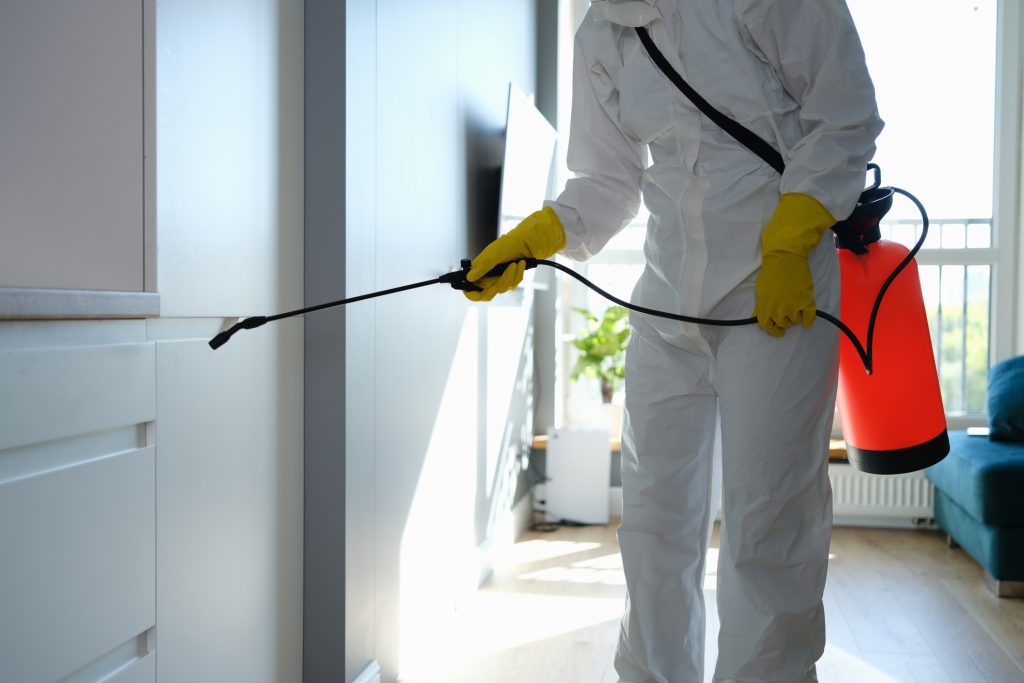Trustworthy Pest Control with results you can count on.
Eco-Friendly Insect Control Approaches for Taking Care Of Wild Animals in Urban Areas
Urban locations usually locate themselves at the junction of human task and wild animals, leading to special difficulties in insect management. These strategies not only shield the setting however likewise enhance community engagement in wild animals monitoring. As metropolitan populaces proceed to expand, comprehending the characteristics of wild animals communications comes to be significantly critical.
Recognizing Urban Wild Animals Characteristics
Comprehending Urban Wildlife Dynamics is important for creating reliable and green bug control approaches. Urban locations are progressively ending up being environments for various wild animals species, driven by aspects such as environment fragmentation, food schedule, and human infringement. Acknowledging these characteristics enables for a nuanced strategy to pest monitoring that lines up with eco-friendly principles.
Urban wildlife commonly includes types such as raccoons, squirrels, and birds, which adjust to city environments, locating particular niches in green spaces, parks, and also suburbs. Their existence can bring about problems with people, specifically when they exploit personnels for food and sanctuary. Comprehending the habits and environmental functions of these varieties informs methods that decrease negative interactions while promoting biodiversity.
Moreover, recognizing the interdependencies within metropolitan ecological communities aids in determining important areas for environment preservation and repair. This understanding adds to the growth of integrated bug management (IPM) methods that consider the eco-friendly equilibrium, thus lowering reliance on dangerous chemicals. By fostering coexistence in between humans and city wildlife, cities can develop healthier environments that benefit both citizens and local communities, paving the way for sustainable city living.
Natural Repellents and Deterrents
All-natural repellents and deterrents provide a lasting option to conventional insect control methods by taking advantage of the power of nature to maintain undesirable species at bay. These green remedies typically use plant-based active ingredients, essential oils, and other normally occurring substances that hinder pests without damaging the environment.
One reliable natural repellent is peppermint oil, which is recognized to push back rats and pests. Its solid fragrance is undesirable to many pests, making it a popular selection for metropolitan settings. Similarly, vinegar and citrus peels can work as deterrents, as their solid smells are commonly unappealing to numerous wildlife.
Additionally, diatomaceous earth is a natural powder that can be spread in locations susceptible to bug task, successfully dehydrating and preventing pests without posturing risks to non-target species. In addition, garlic sprays and neem oil are recognized for their capability to fend off a broad array of bugs, consisting of both pests and bigger wildlife.
Carrying out these natural repellents not only minimizes dependence on chemical pesticides but likewise advertises a much healthier urban community, promoting an extra well balanced conjunction in between humans and wildlife. By utilizing these techniques, city locations can successfully handle parasite populations while minimizing environmental influence.
Environment Adjustment Methods
Reliable habitat adjustment strategies play an essential role in sustainable parasite management by altering the atmosphere to make it much less for pest problems. By recognizing the environmental dynamics of urban locations, homeowner can apply strategic alterations that deter insects while advertising biodiversity.
(Pest Control in Port Charlotte)One main method includes maintaining appropriate sanitation. This consists of normal waste elimination, protecting trash can, and getting rid of standing water to minimize breeding sites for pests and rodents. Furthermore, landscape design techniques such as selecting native plants can boost ecological balance, offering environments for valuable organisms while decreasing resources for insects.
Another vital technique is to seal entry factors in structures. Examining and repairing splits in foundations, walls, and home windows can substantially decrease pest accessibility. Producing physical barriers, such as fencings or plant buffers, can hinder wildlife activity into human-inhabited locations.
Integrated Bug Management Practices
Structure upon habitat adjustment techniques, incorporated pest monitoring (IPM) practices supply an alternative approach to managing pest populations while minimizing environmental influence. IPM integrates numerous strategies, consisting of biological, social, mechanical, and chemical controls, to attain reliable bug monitoring.
Biological control entails the introduction of natural killers or parasites to minimize parasite populations. Social techniques, such as crop rotation and hygiene, disrupt pest life cycles and reduce their environments - Pest Control. Mechanical controls, like traps and obstacles, provide prompt alleviation from insect pressures without chemical treatment
Chemical controls are made use of as a last resort, concentrating on targeted applications that restrict injury to non-target varieties and the environment. The choice of ecologically pleasant chemicals, when necessary, is essential to the IPM structure. In addition, keeping an eye on parasite populaces and evaluating prospective damages assists notify decision-making, ensuring that interventions are timely and efficient.
Community Involvement and Education

(Pest Control PortCharlotte)Workshops and educational sessions can outfit homeowners with expertise about native species, habitat conservation, look what i found and effective non-toxic pest management techniques. Collaboration with schools, local organizations, and federal government firms better boosts instructional outreach, making certain that crucial info reaches diverse target markets.
In addition, community-led initiatives, such as area clean-up days and habitat reconstruction projects, not just advertise biodiversity yet additionally reinforce neighborhood ties. Pest control service. By urging citizens to share their experiences and observations, areas can establish targeted techniques that address details regional insect concerns
Integrating feedback from homeowners into pest administration plans allows an extra responsive and flexible method to wild animals difficulties. Ultimately, notified and engaged neighborhoods are key to attaining long-term success in eco-friendly bug control, leading to much healthier urban atmospheres that respect both human and environmental demands.

Final Thought
Finally, environmentally friendly bug control comes close to offer sustainable services for handling city wild animals. By prioritizing habitat alteration, making use of all-natural repellents, and implementing integrated insect administration techniques, areas can foster a harmonious coexistence with local fauna. Engaging residents with education and learning improves recognition and urges liable wild animals communications. Eventually, these methods not just secure biodiversity yet additionally advertise environmental health and wellness, guaranteeing metropolitan areas stay lively ecological communities where human beings and wild animals prosper together.